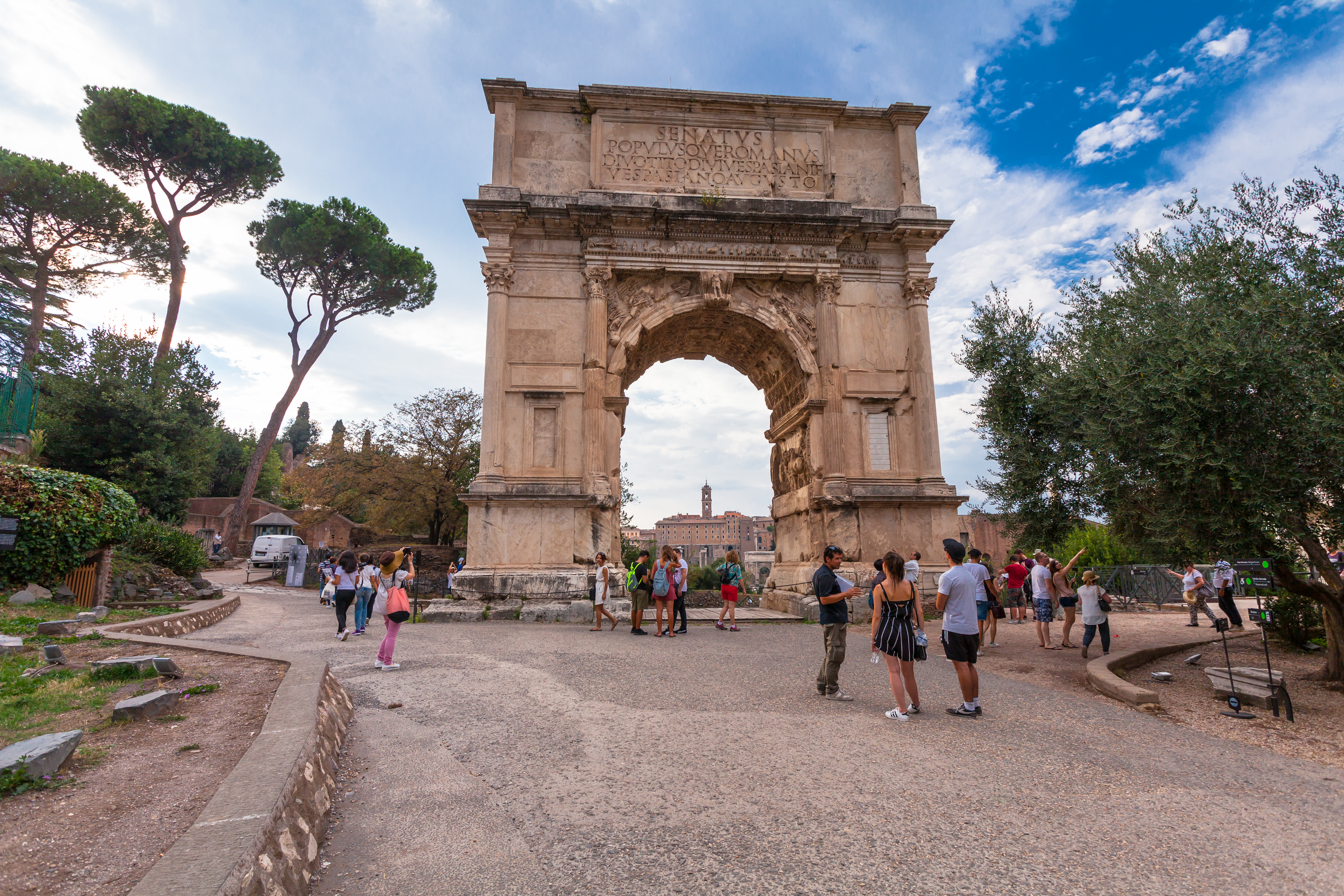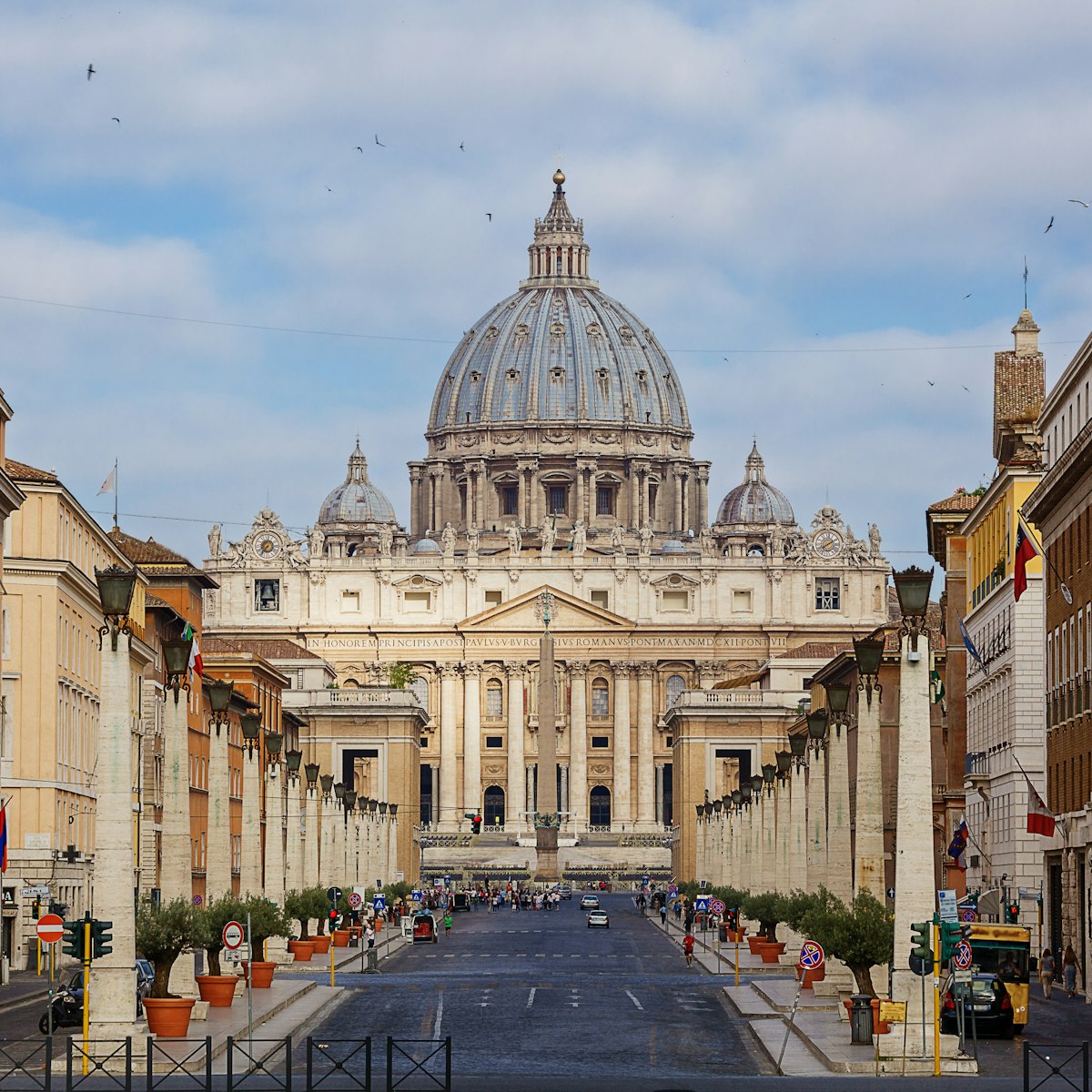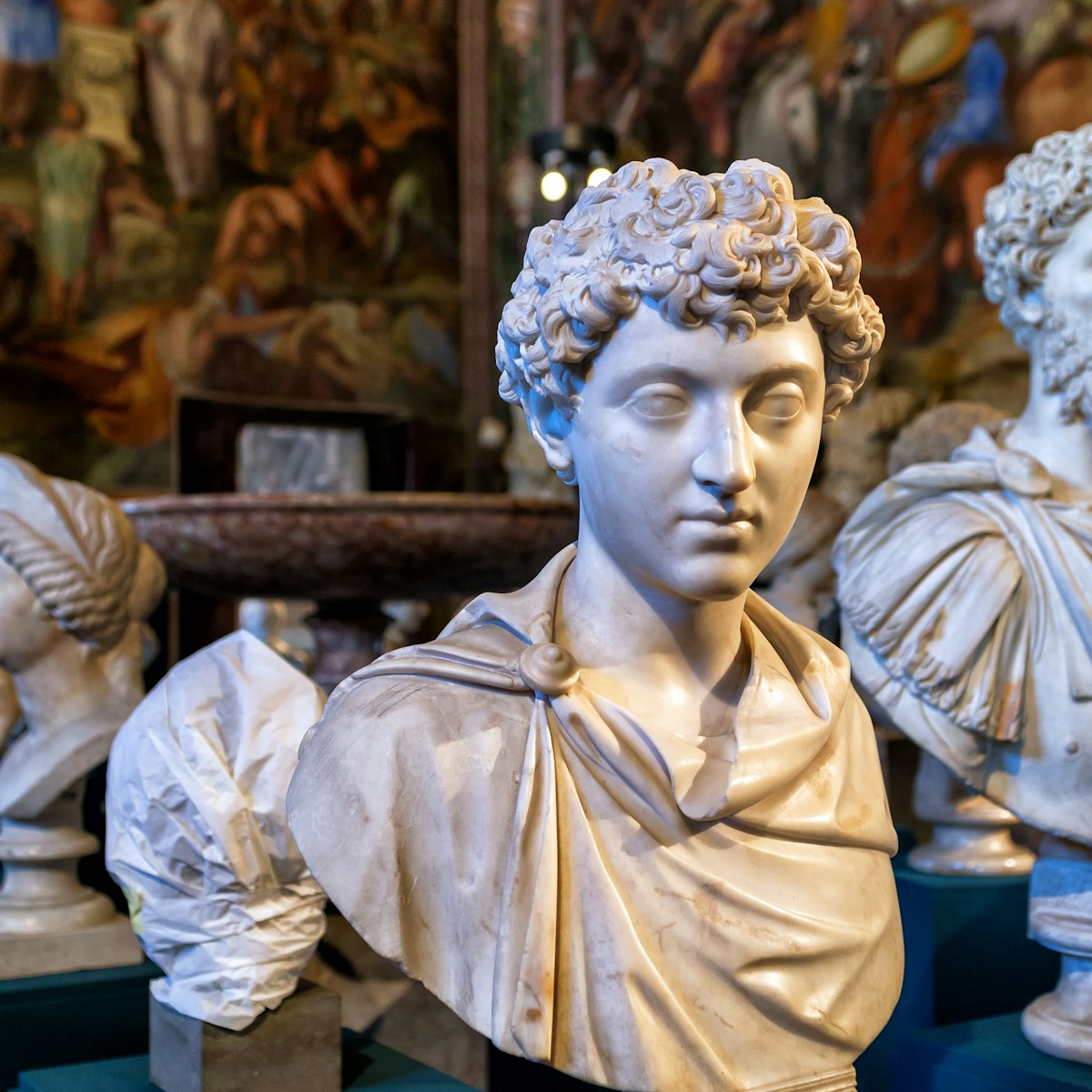An impressive – if rather confusing – spread of ruins, the Roman Forum was ancient Rome's showpiece center, a grandiose district of temples, basilicas and vibrant public spaces. It can be hard to picture this nowadays but if you can get your imagination going, there’s something truly magical about walking in the footsteps of Julius Caesar and other legendary figures.
Signature sights include the Arco di Settimio Severo, the Curia, the Tempio di Saturno and the Arco di Tito.
History of the Roman Forum
The site, which was originally a marshy burial ground, was first developed in the 7th century BCE, growing over time to become the political, religious and commercial hub of the Roman empire. On any given day, it hummed with activity as shoppers thronged its teeming streets, senators debated affairs of state, and lawyers hustled in its busy law courts.
Like many of ancient Rome's urban developments, the Forum fell into disrepair after the fall of the Roman Empire until eventually it was used as pasture land. In the Middle Ages it was known as the Campo Vaccino (Cow Field) and extensively plundered for its stone and marble. The area was systematically excavated in the 18th and 19th centuries, and excavations continue to this day.
Navigating the ruins
There are three entrances to the Forum: at Largo della Salara Vecchia (just off Via dei Fori Imperiali), near the Arco di Settimio Severo, and at the Arco di Tito (nearest the Colosseum and so the busiest). You can also enter directly from the Palatino, which is part of the same archaeological park and covered by the same ticket.
As a rough guide, allow up to an hour and a half to explore the ruins.
Arco di Tito and around
Entering at the Arco di Tito, you’ll see the triumphal arch right in front of you. Supposedly the inspiration for Paris’ Arc de Triomphe, this martial landmark was built by Domitian in 81 BCE to celebrate his brother Titus' victories in Judea and the 70 CE sack of Jerusalem.
Off to the right of the arch, the light-filled Museo del Foro showcases finds from excavations in the early 20th century. It also gives access to a part of the Tempio di Venere di Roma, the largest temple the Romans ever built.
Similarly epic in scale is the Basilica di Massenzio. Started by the emperor Maxentius and finished by Constantine in 315 CE, this colossal structure originally measured 100m by 65m (328ft by 213ft), roughly three times what it now covers.
Temples and churches
From the basilica, Via Sacra, the Forum’s main thoroughfare, leads into the heart of the Forum where you’ll find some key temples.
You’ll see the circular Tempio di Romolo and, beyond that, the columned Tempio di Antonino e Faustina, a 2nd-century CE temple that was subsequently converted into a church. Opposite, the Tempio di Giulio Cesare (also known as the Tempio del Divo Giulio) stands on the spot where Julius Caesar was cremated after his assassination in 44 BCE.
Nearby, three white columns are all that remain of the 5th-century BCE Tempio di Castore e Polluce. Next to the columns are the remnants of the Tempio di Vesta, a revered temple whose sacred flame was kept alight by Vestal Virgins from the adjacent Casa delle Vestali (the building with the central grassy atrium).
Tucked away on the far side of the Forum is the 6th-century Chiesa di Santa Maria Antiqua, the oldest and most important church on the site. A treasure trove of early Christian art, it contains some exquisite 6th- to 9th-century frescoes and a hanging depiction of the Virgin Mary with child, one of the earliest icons in existence.
From inside the church, you can also access the Rampa di Domiziano, an underground passageway the emperors used to enter the Forum from their Palatine palaces.
Arco di Settimio Severo and around
One of the Forum’s landmark monuments, the 23m-high Arco di Settimio Severo was built in 203 CE to commemorate Septimius Severus’ victories over the Parthians (in modern-day Iran).
To the right of the arch, the Curia was the original seat of the Roman Senate. A big, barn-like building, this was rebuilt on various occasions and the version you see today is a 1937 reconstruction of how it looked in the reign of Diocletian (r 284–305).
On the other side of the arch, eight granite columns remain from the Tempio di Saturno, an important temple that doubled as the state treasury.
In the area in front of the arch, the free-standing Colonna di Foca (Column of Phocus) rises above what was once the Forum's main square, Piazza del Foro.
Flanking the piazza are the remains of two major basilicas: on the Via Sacra side, the Basilica Fulvia Aemilia, and on the Palatino side, the Basilica Giulia, which was commissioned by Julius Caesar and completed by Augustus.
Tickets and SUPER sites
The standard Forum ticket costs €16 and covers the Forum, Palatino and Colosseum. It does not, however, include the Forum’s so-called SUPER sites: the Tempio di Romolo, Rampa di Domiziano, Chiesa di Santa Maria Antiqua, Oratorio dei Quaranta Martiri, Curia (open Saturdays to Mondays). To access these you’ll need a Full Experience ticket (€22) or a Forum SUPER Pass (€16).
You can get tickets online (plus €2 booking fee) or directly at the ticket office on Piazza del Colosseo (expect queues).
Visitor tips
The best time to visit is first thing in the morning or late afternoon. Crowds are at their worst between 11am and 2pm and it can get very hot in the midday sun, especially as there’s little shade on site. Hats and comfy shoes are highly recommended.
For the best photos of the Forum head up to the neighboring Palatino or Campidoglio hill.
To eat nearby
For a restorative coffee break, work your way up to the Campidoglio and the Terrazza Caffarelli, the Capitoline Museums' panoramic rooftop cafe.
If you want something more substantial, try Terre e Domus, a casual restaurant serving regional cuisine and local wines.









